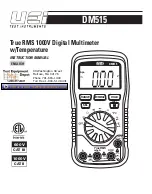
33
MINIATURE 2-CHANNEL STATISTICAL MULTIPLEXOR
4.20 End-to-End Software Flow Control Screen
View the current status of end-to-end software flow control used on this sub-
channel and select, if desired, a new status.
In addition to the STM-to-DTE control function (
Section 4.19
), the Multiplexor
provides a DTE-to-DTE (or “end-to-end”) flow-control function. This function
allows a receiving DTE to command the remote transmitting DTE to interrupt data
flow, because temporarily it can not accept new data, flow required action on the
local sub-channel. This avoids problems that could be caused by the link
transmission delay.
This is done by selecting the ON option on this screen. The Multiplexor is then
configured to recognize the two special flow control characters (selected by means
of the screens presented in
Sections 4.11
and
4.12
): X-OFF, that conveys local DTE
“stop flow” command, and X-ON, that conveys local DTE “restart flow” command.
The detected X-ON/X-OFF commands are sent to the remote Multiplexor,
which converts them to flow-control commands for the remote DTE connected
to it.
When an X-OFF command is received from the local DTE, the local Multiplexor
interrupts immediately the transfer of received data to the local DTE. The
additional data sent by the remote DTE during the time it takes to transfer the
X-OFF command accumulates in Multiplexor buffers. Similarly, when an X-ON
command is received from the local DTE, the local Mux immediately starts the
transfer of received data (accumulated as explained before).
The flow control commands supplied to the remote DTE depend on the Mux-
to-DTE flow control mode selected at the remote DTE: the same X-ON/X-OFF
characters, or use of CTS line (see
Section 4.19
).
When the local DTE does not have software flow control capability, the
Multiplexor “end-to-end software flow control” must be configured as OFF, to
prevent the Multiplexor from responding to the X-ON and X-OFF characters.
In this case, see also
Section 4.21
. Screen selections are as follows:
Code numbers 1 and 2 list the available selections of end-to-end software
flow-control status: on or off.
Code Q is used to retum to the SUB-CHANNEL CONFIGURATION screen.
The CURRENT STATE line shows the current state of end-to-end software
flow control used on this sub-channel.
















































